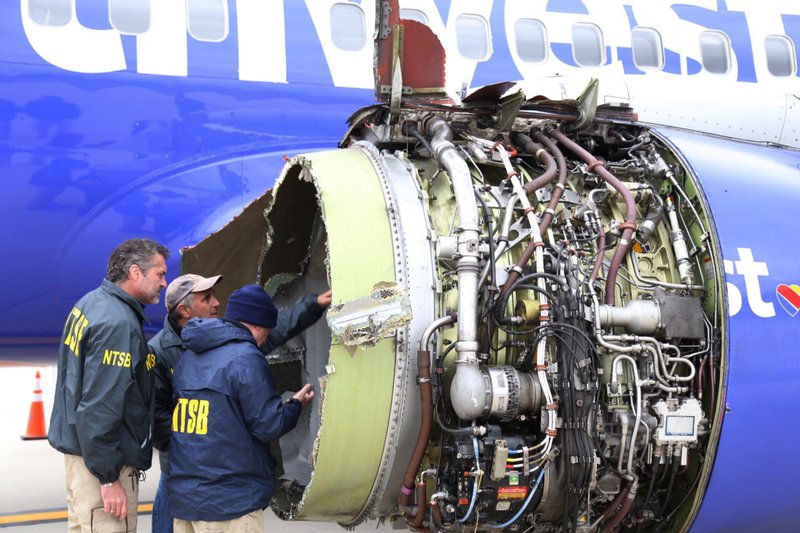There was a loud bang, and suddenly the Southwest Airlines jet rolled 41 degrees to the left. Smoke began to fill the cabin, and flight attendants rushed row by row to make sure all passengers could get oxygen from their masks.
When flight attendant Rachel Fernheimer got to row 14, she saw a woman still restrained by her lap belt but with her head, torso and arm hanging out a window.
Fernheimer grabbed one of the woman's legs while flight attendant Seanique Mallory grabbed her lower body. They described being unable to get the woman back in the plane until two male passengers stepped in to help.
The harrowing details from the April fatal flight were released for the first time as the National Transportation Safety Board began a hearing Wednesday into the engine failure on Southwest Flight 1380, which carried 144 passengers and five crew members.
After several failed attempts to reach the pilots by intercom because of the rush of air and noise, Mallory was finally able to relay the situation to Tammie Jo Shults and Darren Ellisor, who had already planned an emergency landing of the crippled Boeing 737-700 in Philadelphia.
The passenger in the window seat, Jennifer Riordan, was fatally injured -- the first death on a U.S. airline flight since 2009. Eight other passengers including at least one of the men who helped pull Riordan back in the window, suffered minor injuries.
The accident was triggered by an engine fan blade that broke off. A piece of engine cover struck and shattered the window next to Riordan, a 43-year-old mother of two from Albuquerque, N.M.
Wednesday's hearing in Washington focused on design and inspection of fan blades on the engine, made by CFM International, a joint venture of General Electric and France's Safran S.A.
A spokesman for CFM said in an emailed statement Wednesday that the company could not comment on an active investigation, but noted that it had "responded aggressively" to complete blade inspections after the fatal flight before an Aug. 31 deadline.
The blade that broke had made about 32,000 flights. An examination indicated that it probably was beginning to suffer cracks from metal fatigue when it was last inspected in 2012, said Mark Habedank, an engineering official at CFM. But the crack was smaller than could be detected by the test used at the time, which used fluorescent dye.
After the fatal accident, CFM recommended the use of more sophisticated tests using ultrasound or electrical currents. The company also recommended much more frequent inspections and lubrication of the blades.
Fan blades have been thought to have no real lifetime limit. CFM and Federal Aviation Administration officials said they were now considering whether blades must be replaced at some point even if they don't show wear.
Wednesday's hearing was led by one of the safety board's five members, Bella Dinh-Zarr. The full board is expected to determine a probable cause for the accident in the next several months.
A Section on 11/15/2018

